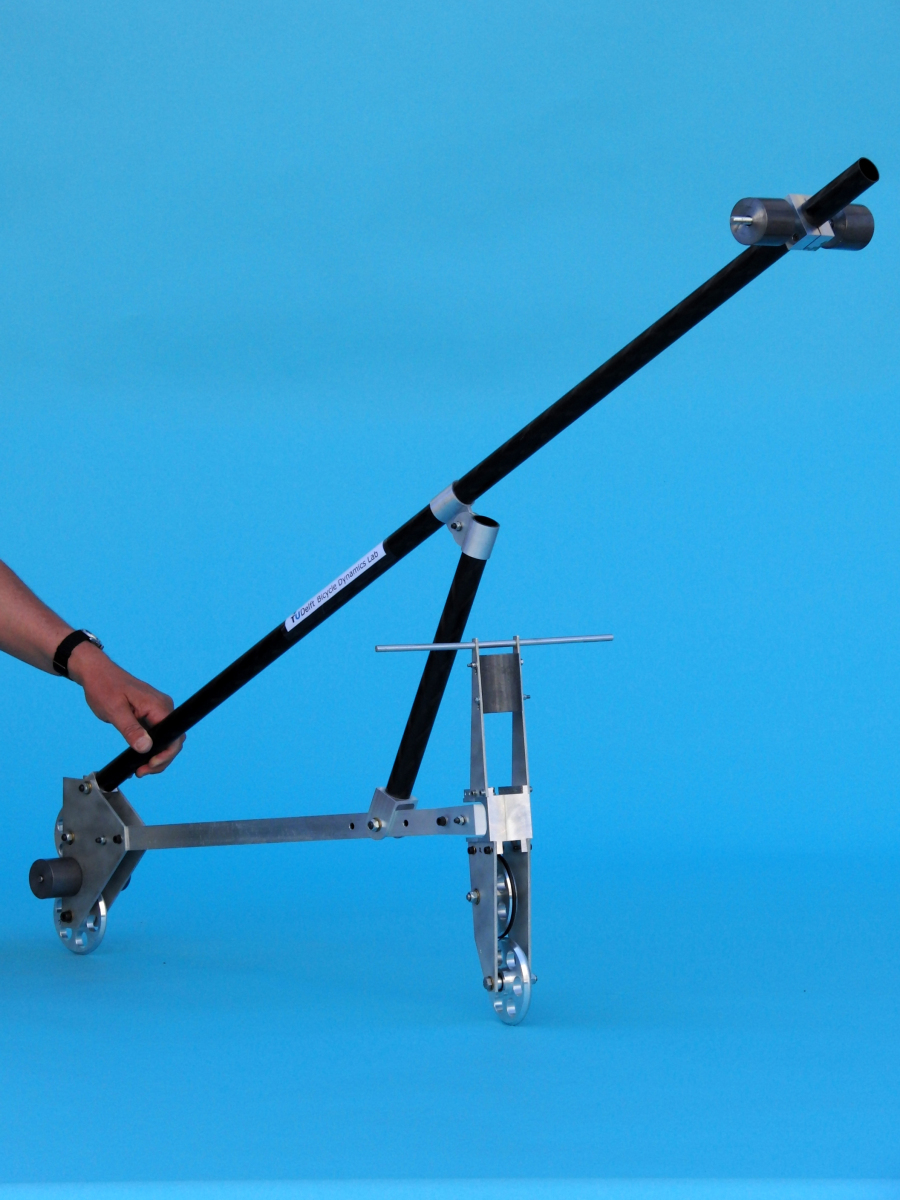A team working in the USA and Holland have this week come one step closer to working out how a rider-less bicycle remains upright. As you know, this only happens when the bike is moving, so there must be some interesting mechanical forces at work keeping it from toppling over.
 What happens when the bike coasts is that, each time it starts to fall to one side, the front wheel will steer into the fall and so correct it - making the bike upright again.
What happens when the bike coasts is that, each time it starts to fall to one side, the front wheel will steer into the fall and so correct it - making the bike upright again.
For some time the conventional wisdom has been that two principal forces cause this corrective steering to occur. The first of these is a sort of precession - otherwise known as gyroscopic torque. This is when something spinning in a particular direction provides a force that acts on the axis of the spin. For example, if you have one of those spinning tops where you pull a piece of string to make it spin, the spinning motion keeps it upright as gyroscopic forces pull on the axis to create a sort of self-correcting balance. When the top is not spinning, it simply topples over on one side. For a long time it's been thought that the same effect happens on the bicycle wheel.
The second effect is the caster effect. You'll see this on shopping trolley wheels where, when you steer it around corners, the wheels appear to get dragged around behind the direction you're steering it in. And this is because they're set on posts which are (if viewed from the side) in front of the position where the wheel meets the ground. The same thing is effectively true of a bike, because the place where the wheel meets the ground is actually slightly behind the steering axis.
Publishing in Science, this team built a bike that counteracted these two effects, to see if it would still stay upright when moving. Jodi Kooijman
But... when they let this construction roll alone, it still managed to balance upright. Further, it didn't lose its balance as it went faster - unlike normal bikes.
The researchers think that there must be something else going on, possibly related to mass distribution. They also argue that, until we fully understand the mechanics behind them, bikes today could be falling well-short of their design potential.










Comments
Add a comment